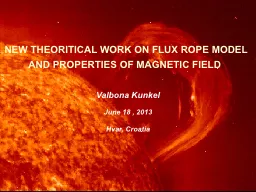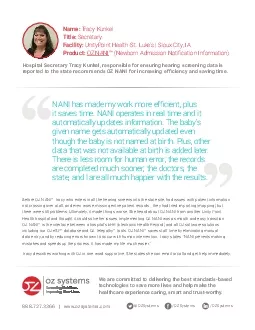PPT-Valbona Kunkel
Author : pamella-moone | Published Date : 2016-04-02
June 18 2013 Hvar Croatia NEW THEORITICAL WORK ON FLUX ROPE MODEL AND PROPERTIES OF MAGNETIC FIELD GEOMETRY OF FLUX ROPE MODEL S f a f EFR model use a circular
Presentation Embed Code
Download Presentation
Download Presentation The PPT/PDF document "Valbona Kunkel" is the property of its rightful owner. Permission is granted to download and print the materials on this website for personal, non-commercial use only, and to display it on your personal computer provided you do not modify the materials and that you retain all copyright notices contained in the materials. By downloading content from our website, you accept the terms of this agreement.
Valbona Kunkel: Transcript
Download Rules Of Document
"Valbona Kunkel"The content belongs to its owner. You may download and print it for personal use, without modification, and keep all copyright notices. By downloading, you agree to these terms.
Related Documents





